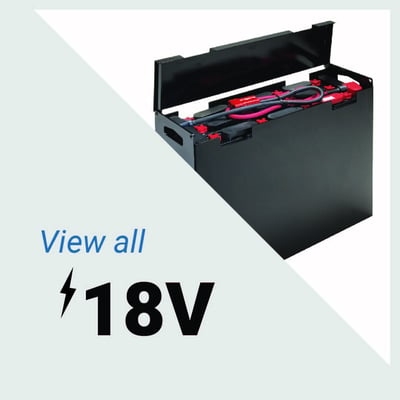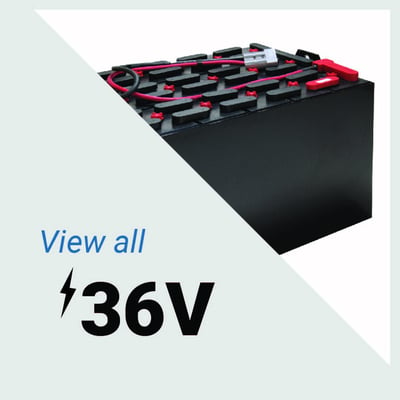
Reading Industrial Batteries Specification Sheets
When it comes to industrial batteries, understanding the specifications can feel like deciphering a foreign language. Whether you're in charge of maintaining forklift batteries or you're involved in the procurement process, knowing how to read specification sheets is crucial. In this article, we’ll break down the essential elements of these documents, enabling you to make informed decisions about your battery needs.
Understanding Forklift Batteries Specifications
Forklift batteries are vital for powering electric forklifts and other material handling equipment. The specifications provided in their datasheets are not just numbers; they’re indicators of performance, longevity, and overall suitability for your operational needs. So, what should you look for when reading industrial batteries specification sheets?
Key Components of Battery Specification Sheets
- What It Is: Voltage rating indicates the electrical potential of the battery.
- Why It Matters: For instance, most forklift operations require 24V or 48V systems. Using a battery with an incorrect voltage rating can lead to operational inefficiencies or even damage to the equipment.
- What It Is: Capacity is measured in ampere-hours (Ah) and signifies how much current a battery can provide over time.
- Why It Matters: If your operation demands long lifting cycles without frequent recharges, opting for a higher capacity battery will ensure that your forklift runs efficiently throughout shifts.
- What It Is: This refers to the number of complete charge-discharge cycles a battery can undergo before its capacity drops below a certain percentage (commonly 80%).
- Why It Matters: A longer cycle life means less frequent replacements and lower costs over time. Look for batteries that offer high cycle life if you anticipate heavy usage.
- What It Is: These physical characteristics define how much space the battery will occupy and how it will fit into your forklift.
- Why It Matters: Ensure that the battery fits well within your forklift's designated compartment without exceeding weight limits that could affect maneuverability.
- What It Is: Industrial batteries come in various chemistries such as lead-acid, lithium-ion, or nickel-cadmium.
- Why It Matters: Each type has distinct advantages and disadvantages. For example, lithium-ion batteries tend to have longer lifespans but may come at a higher initial cost compared to traditional lead-acid options.
Decoding Additional Features
Beyond basic specifications, many datasheets include additional features that enhance usability:
- Temperature Range: Knowing the optimal operating temperature can help you maintain efficiency.
- Charging Time: Quick charging capabilities can be essential if downtime needs to be minimized.
- Maintenance Requirements: Some batteries require more upkeep than others; understanding this helps avoid unexpected costs later on.
By familiarizing yourself with these key components and features found in industrial batteries specification sheets, particularly those pertaining to forklift batteries, you’ll be better equipped to choose wisely based on your operational requirements.
Reading Industrial Batteries Specification Sheets Effectively
Now that we've covered what goes into the specifications of forklift batteries, let’s discuss some strategies for effectively reading these sheets so you don’t get lost in technical jargon.
Tips for Navigating Specification Sheets
Start with an Overview Before diving into details, take a moment to scan through the overview section. This usually summarizes crucial data like voltage ratings and capacity—providing context before you dig deeper.
Highlight Key Figures As you read through the sheet, highlight or note down numbers relevant to your needs—voltage ratings, capacities, cycle lives—these figures will guide your decision-making process significantly.
Compare Across Brands Don’t settle on one manufacturer’s specifications too quickly! Instead, compare multiple brands side by side to understand variations in performance metrics such as cycle life or charging times.

Consult Technical Support If something doesn’t make sense—don’t hesitate to reach out for clarification! Most manufacturers have support staff who can explain intricate details about their products' specifications.
Utilize Online Resources Many manufacturers provide comprehensive online databases where users can download spec sheets or even run comparisons between different models of industrial batteries.
Stay Updated on Technology Trends The world of industrial batteries is ever-evolving with new technologies emerging regularly. Keeping abreast of developments ensures you’re making informed choices based on up-to-date information!
By employing these tips while navigating specification sheets for forklift batteries and other industrial applications, you'll position yourself as an informed user rather than merely someone sifting through numbers on paper.
FAQs About Reading Industrial Batteries Specification Sheets
1. What is a specification sheet?
A specification sheet is a document that outlines all technical details regarding a product—in this case, an industrial battery—such as voltage rating, capacity, cycle life, dimensions, and chemistry type.
2. Why do I need to consider cycle life?
Cycle life determines how long you'll be able to use a battery before it starts losing its effectiveness; a longer cycle life means fewer replacements needed over time.
3. Can I use any voltage rating for my forklift?
No! Using an incorrect voltage rating can damage equipment or lead to inefficiencies; always match your forklift's requirements with the specified voltage of any potential battery purchase.
4. What’s better: lead-acid or lithium-ion?
It depends on your specific needs! Lead-acid is generally cheaper but has shorter lifespans compared to lithium-ion 18 volt flat plate forklift batteries which offers longer service life but at higher upfront costs.
5. How often should I check my forklift's battery specifications?
Regular checks are recommended—ideally before each operational shift—to ensure compatibility with equipment needs remain within acceptable ranges over time!
6. Where can I find reliable specification sheets?
Most reputable manufacturers provide downloadable spec sheets directly from their websites; additionally platforms like industry forums may also prove helpful!
Understanding how to read industrial batteries specification sheets equips businesses—not just operators—with knowledge crucial for maintaining efficient operations involving lift trucks and other machinery 80 volt flat plate forklift batteries reliant upon dependable power sources like forklifts!
By mastering these principles behind reading industrial batteries specification sheets effectively—and focusing specifically on key factors 72 volt flat plate forklift batteries relevant particularly toward forklift applications—you’ll pave yourself towards making informed decisions while optimizing productivity levels throughout your organization forklift batteries daily!